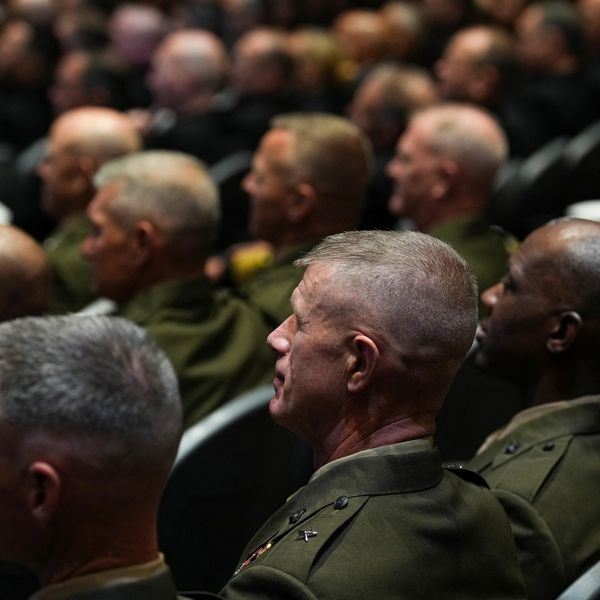Friday marks the seventh anniversary of the Saudi-led military intervention against Yemen, and thanks to Saudi Arabia’s escalation with U.S. assistance, the violence seemingly gets worse everyday.
On the sixth anniversary, Biden’s recent inauguration inspired hope that the U.S. might successfully encourage the warring parties towards a ceasefire. Yet over the course of the past year, it became clear that the Biden administration supported Saudi and Emirati objectives in Yemen almost as actively as the Trump administration, although they veiled their preference for the Saudi-led coalition in a veneer of diplomacy.
A new brief from the Quincy Institute highlights ongoing U.S. assistance for the Saudi-led military intervention, despite Biden’s declaration that he would “end all American support for offensive operations in the war in Yemen, including relevant arms sales.” The administration paused two arms deals, but later proceeded with over a billion dollars in new sales to the kingdom. It characterized these weapons as defensive, yet as the brief argues, defensive capability converts directly to offensive advantage. By assisting Saudi Arabia and the UAE with defense, the U.S. allows these countries to attack Yemen with greater impunity. Further, both Saudi Arabia and the UAE already possess hundreds of billions of dollars in offensive weapons, mostly purchased from the United States, which they continue to use against Yemen.
Biden administration officials frequently condemn Houthi transborder attacks, yet fail to condemn Saudi air strikes. On February 10, 2021, State Department spokesperson Ned Price described the Houthis as “continually demonstrat[ing] a desire to prolong the war by attacking Saudi Arabia, including endangering civilians.” In August 2021, Secretary of State Antony Blinken stated that since the beginning of the year, Saudi Arabia “has endured more than 240 attacks by the Houthis.” On January 24, 2022, Tim Lenderking, the special envoy, emphasized “the U.S. government’s condemnation of the recent Houthi attacks against the UAE and Saudi Arabia that killed civilians.”
The problem with these statements is one of proportion. The administration’s narrative consistently blames the Houthis and stresses their transborder attacks as particularly dangerous, yet transborder attacks on Yemen carried out by the Saudi-led coalition far outnumber them and have been magnitudes more destructive.
Houthi transborder attacks never surpass and rarely even approach the number of coalition air raids conducted on Yemen each month. Crucially, with the help of U.S.–made defense systems, Saudi Arabia successfully deflects 90 percent of the Houthis’ transborder attacks.
The Saudi-led coalition has carried out more than 24,800 air raids since 2015, an average of almost 10 each day. Coalition air raids have killed almost 9,000 civilians and wounded more than 10,000.
In contrast, the Saudi coalition spokesperson reported in December 2021 that the Houthis have launched over 400 missiles and over 800 drones at Saudi Arabia since the start of the war in March 2015, killing 59 civilians. Added together, Houthi missile and drone attacks average approximately one attack every other day.
Over the weekend, the Houthis launched a series of coordinated attacks on Saudi energy facilities: there were no casualties. In contrast, a Saudi air raid on a detention facility in Yemen in January killed 91 people and injured hundreds.
The Saudi air force relies heavily on U.S. military contractors to provide maintenance, spare parts, and repairs for their planes: without U.S. help, the Saudis could not bomb Yemen. Based on Biden’s post-inauguration declaration that the U.S. was ending support for offensive military action, it is surprising that coalition air raid levels remained relatively consistent from 2020 to 2021. If the U.S. had genuinely withdrawn support for Saudi offensives, the rate of coalition air raids should have declined from the Trump era to the Biden era, but it has not.
Instead, coalition attacks began to increase dramatically in late 2021. Contrary to the characterizations of the Biden administration, this was not in response to Houthi transborder escalation, as Houthi attacks remained relatively stable. The Houthis may have escalated within Yemen, but they did not increase their attacks on Saudi territory.
The war is often framed as a proxy conflict between Saudi Arabia, supporting the ousted government of President Abd Rabo Mansur Hadi, and Iran, backing the Houthi rebels. Yet in practice, the Saudi-led intervention constitutes a campaign of collective punishment against the Yemeni population, 80 percent of whom live in areas controlled by the Houthis. The Saudis justify their aerial bombardment and fuel blockade as necessary to counteract the Houthis and their Iranian allies, but the Houthis’ strength has only grown over the past seven years, while the lives of ordinary Yemenis have been shattered. Saudi actions have only contributed to Houthi strength: the longer the war continues, the more likely the Houthis will consolidate control, an outcome many Yemenis dread.
There are no “good guys'' in this war: All parties to the conflict have been credibly accused of war crimes by U.N. experts. In contrast to the Biden administration’s narrative that it is committed to supporting the resolution of the conflict, the U.S. nonetheless signals its ongoing support to the Saudis and Emiratis for their war on Yemen. By consistently reiterating U.S. support, the Biden administration risks escalating U.S. involvement in the war.
Competition with Russia and China has prompted Biden to prioritize close military ties with Saudi Arabia and the UAE. It is this calculation that has caused him to renege on his pledge to end the war. This not only risks dragging Washington deeper into the conflict; it also prolongs the war, compounding the destruction of Yemen. The Saudi and Emirati military aggression that the U.S. supports is little different from Russian actions in Ukraine.
The Biden administration should instead adopt a strategy that takes American national interests as its starting point. This would mean not deferring to Gulf partners on matters that undermine U.S. interests and could plunge it into yet another military confrontation in the Middle East. Deferring to Gulf partners as a means of countering China and Russia is also a questionable strategy, as the Saudis and Emiratis have already demonstrated that they will hedge their bets on U.S. competition with other great powers, as demonstrated by their unwillingness to condemn Russia’s invasion of Ukraine.
















